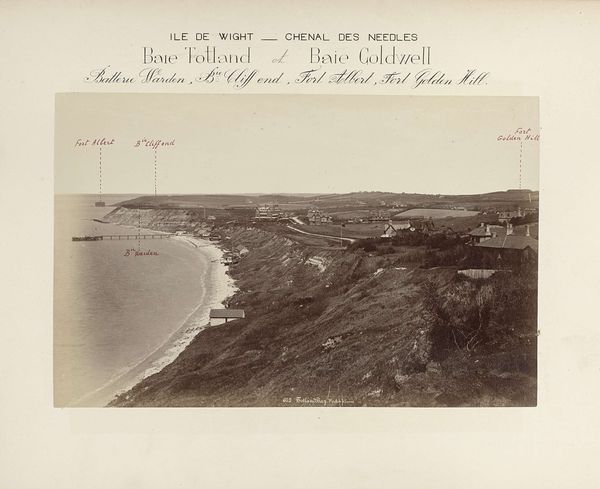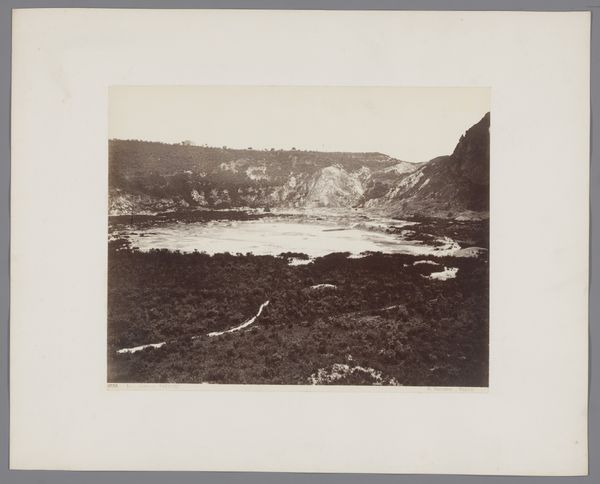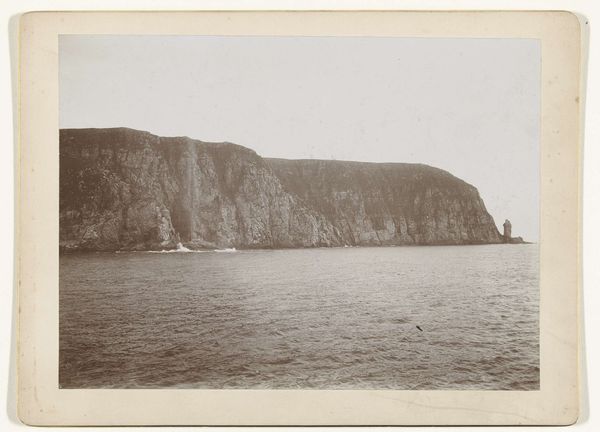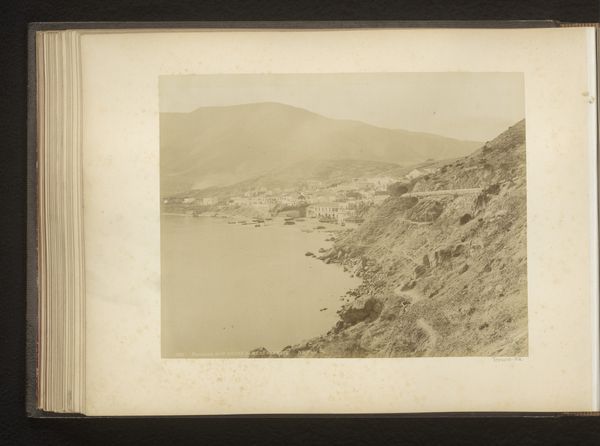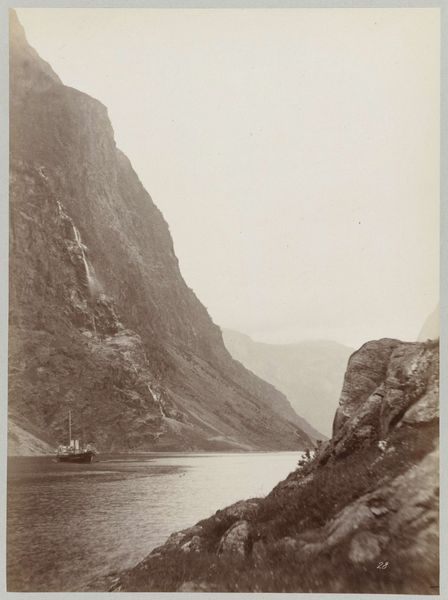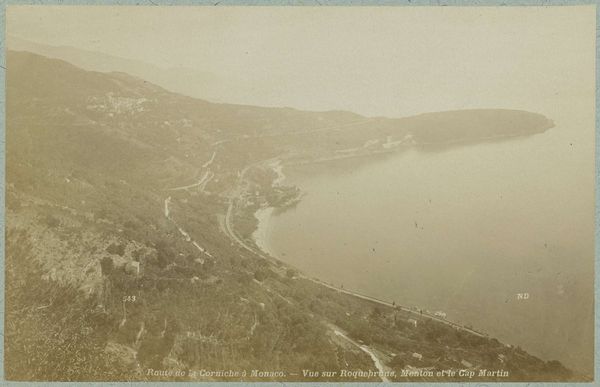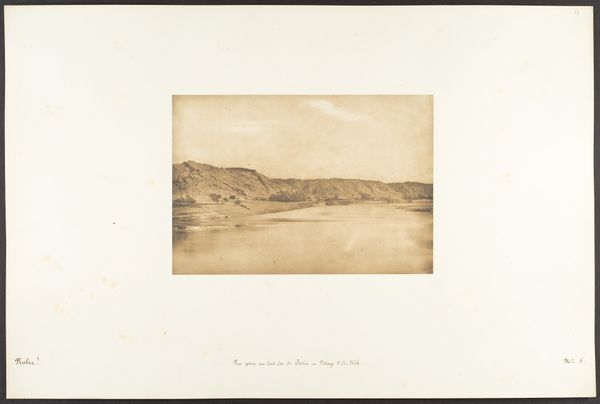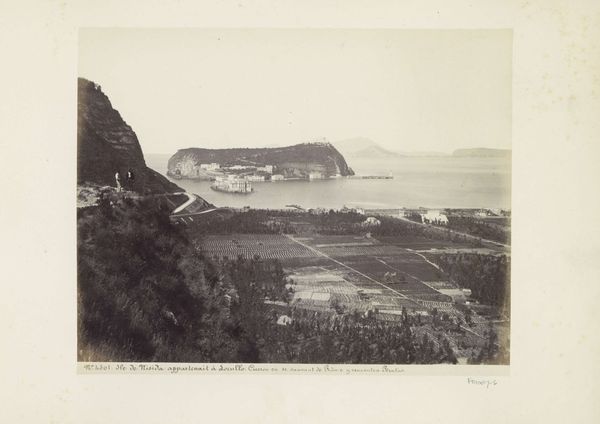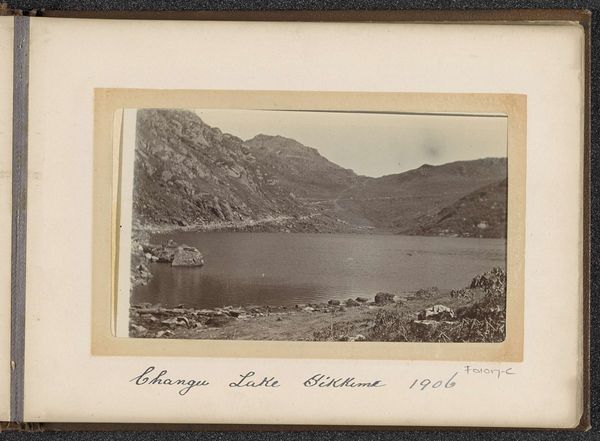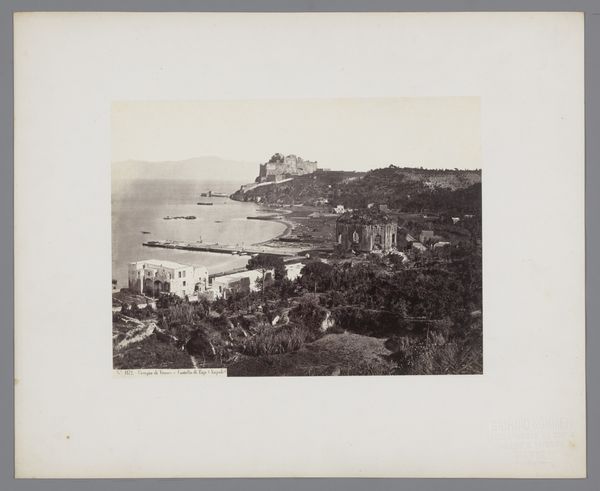
photography
#
pictorialism
#
landscape
#
photography
#
realism
Dimensions: height 186 mm, width 291 mm
Copyright: Rijks Museum: Open Domain
This is an albumen print of Alum Bay on the Isle of Wight, created by Poulton. The albumen print process, popular in the 19th century, involved coating paper with egg white and then a silver nitrate solution, before being exposed to light through a negative. The resulting image has a characteristic warm tone and fine detail. The surface quality of the photograph has a subtle sheen, which is a direct result of the albumen binder used to bind the silver particles to the paper. In this image, the geological layers of Alum Bay are rendered with striking clarity, highlighting the natural formations and textures of the landscape. Photography at this time allowed for new ways of seeing landscapes, with this particular example likely produced for the tourist market. The photograph acts as a document, which is tied to the industry of tourism and consumerism of landscape imagery. The choice of material and process profoundly influences the image's aesthetic and contextual meaning, reminding us that even in photography, materiality and making are central to art's interpretation.
Comments
No comments
Be the first to comment and join the conversation on the ultimate creative platform.
